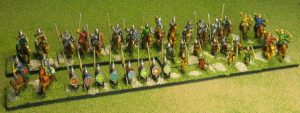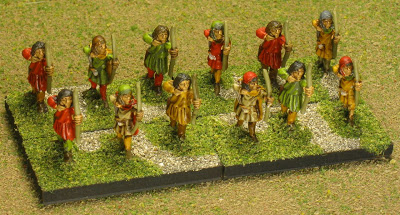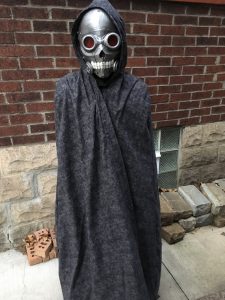
Another year, another Halloween costume! This year Ezra chose the character Death Gun from the Anime series Sword Art Online II.
This one was supposed to be pretty easy: a mask, a cloak; maybe some arm coverings; he wasn’t allowed to bring costume weapons to school anyway.
Nothing is ever as easy as it’s supposed to be, though.
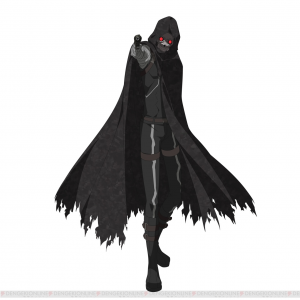
We started with a foam head from the craft store, and a cool material called Sculpt-a-Mold. This is basically a mix of paper pulp and plaster. After mixing water to form a pasty consistency, you can form arbitrary shapes out of it. Because of the plaster, it dries in only half an hour; but the paper fibers make it much less brittle than plain plaster.
After many iterations of shaping and sanding, we identified a few fatal flaws with the approach. The mask was relatively heavy, but it was still too brittle to attach straps securely to it. More importantly, starting with a head-sized base meant that the mask fit too tightly on Ezra’s face, making it impossible to breathe or even open his mouth.
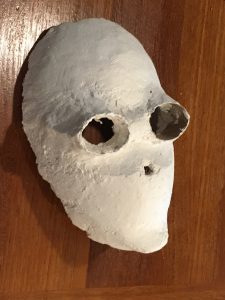
Solving this problem turned out to be a great excuse to get a 3d printer. There was a model available on Thingiverse available, so all we needed to do was print, assemble, and paint it.
Even 3d printers that work well are a bit fiddly and require adjustment, experimentation, and maintenance to produce good results. I didn’t start printing this mask until I was confident I’d get good results, and overall, it succeeded. I didn’t have any completely failed prints, but there was a bit of underextrusion in the chin pieces, which led to a piece breaking off on Halloween night.

The lenses were thin plastic from packaging material, painted with Testors transparent red paint. We just glued them in, instead of using the lens holder pieces included in the 3d model. The mask itself was glued together using 5 minute epoxy, primed grey, and painted with craft acrylics. I didn’t make any effort to smooth the surface prior to painting, and it turned out fine. The printing layers aren’t really visible, but the polygonal facets of the 3d model can be seen in the finished product.

The cloak was made from a pattern and fabric found at Jo-Ann Fabrics. We tried several techniques to get arm wraps like Ezra wanted, but they didn’t work well, so we abandoned that. Under the cloak, he wore all black, with the black strap chest harness we made for the Gaara costume.
This wasn’t the most satisfying costume project, but it turned out well,

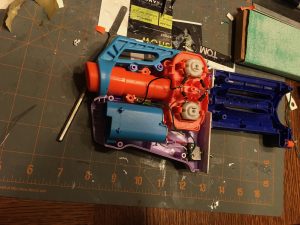

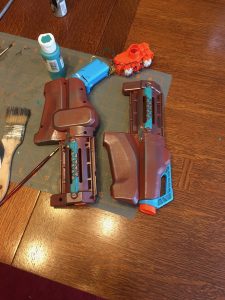
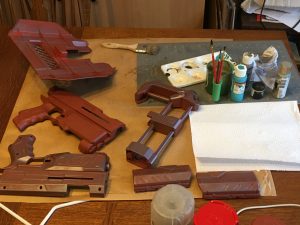


 Gaara manipulates sand, and so he always carries with him a giant gourd-shaped container made of sand. This prop defines the character, but it’s huge and potentially unwieldy. Construction was theoretically simple: use paper mache. However, it wasn’t easy.
Gaara manipulates sand, and so he always carries with him a giant gourd-shaped container made of sand. This prop defines the character, but it’s huge and potentially unwieldy. Construction was theoretically simple: use paper mache. However, it wasn’t easy.













